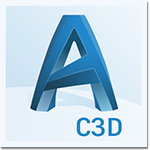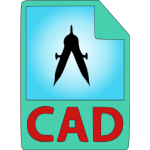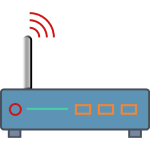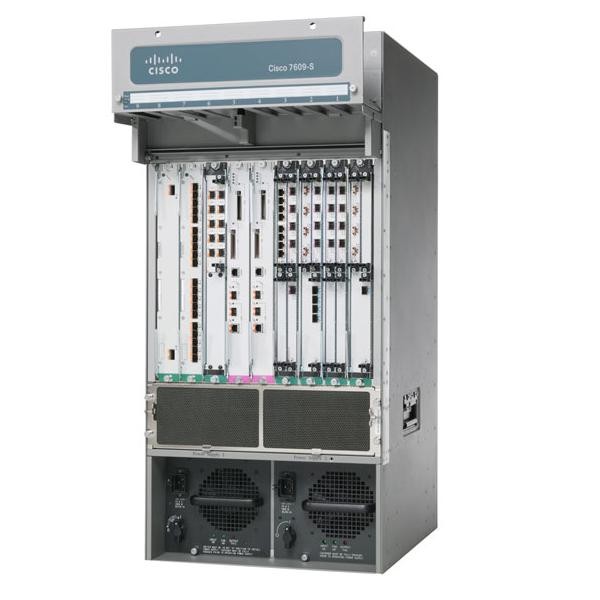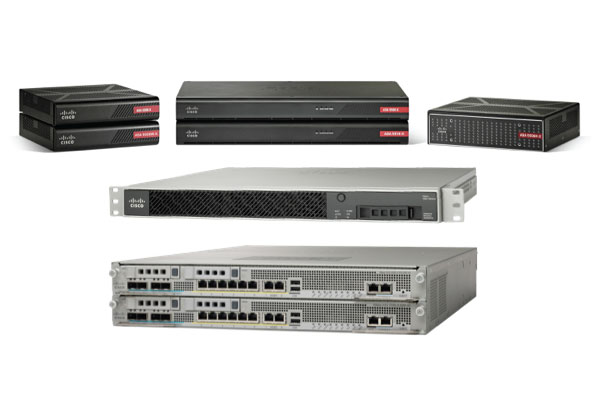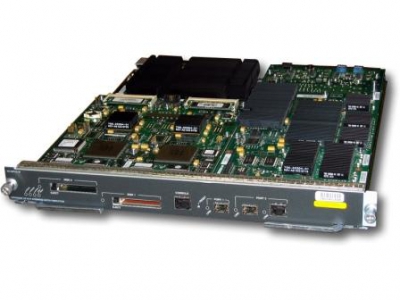View
Sorting
Products found: 127
AutoCAD Architecture
AutoCAD Civil 3D
Autodesk 3ds Max
- MAXScript: built-in scripting language that can be used to automate repetitive tasks, combine existing functionality in new ways, develop new tools and user interfaces, and much more
- Character Studio helps users to animate virtual characters
- Scene Explorer, a tool that provides a hierarchical view of scene data and analysis, facilitates working with more complex scenes. Scene Explorer has the ability to sort, filter, and search a scene by any object type or property (including metadata)
- DWG import
- Texture assignment/editing: creative texture and planar mapping, including tiling, mirroring, decals, angle, rotate, blur, UV stretching, and relaxation; Remove Distortion; Preserve UV; and UV template image export
- General keyframing: set key and auto key — offer support for different keyframing workflows
- Constrained animation: objects can be animated along curves with controls for alignment, banking, velocity, smoothness, and looping, and along surfaces with controls for alignment. Weight path-controlled animation between multiple curves, and animate the weight. Objects can be constrained to animate with other objects in many ways — including look at, orientation in different coordinate spaces, and linking at different points in time
- Skinning
- Skeletons and inverse kinematics (IK)
- Integrated Cloth solver
- Integration with Autodesk Vault
- Max Creation Graph
AUTODESK ARCHITECTURE, ENGINEERING & CONSTRUCTION COLLECTION
- Revit
- AutoCAD Civil 3D
- InfraWorks
- AutoCAD
- Advance Steel
- AutoCAD Architecture
- AutoCAD Electrical
- AutoCAD Map 3D
- AutoCAD MEP
- AutoCAD Plant 3D
- AutoCAD Raster Design
- AutoCAD mobile app
- Cloud storage (25 GB)
- Dynamo Studio
- Fabrication CADmep
- FormIt Pro
- Insight
- Navisworks Manage
- ReCap Pro
- Autodesk Rendering
- Revit Live
- Robot Structural Analysis Professional
- 3ds Max
- Structural Analysis for Revit
- Structural Bridge Design
- Vehicle Tracking
Autodesk AutoCAD
Autodesk AutoCAD Mechanical
- Layer management. Isolate and restore layer groups and specify linetypes and lineweights.Create, delete, and rename layers and layer definitions, change their properties, or add layer descriptions
- Hidden lines. The AutoCAD Mechanical toolset automatically creates hidden lines when you specify which objects overlap the others. Update geometry automatically when changes occur. Minimize manual redraws.
- 700,000+ standard parts and features. Produce accurate drawings with standard components.
- Machinery generators and calculators
- When you need to capture more complex engineering in a drawing, machinery generators can expedite the process. Efficiently analyze designs, including shaft, spring, belt, chain, and cam generators.
- Document 3D CAD models. Use the AutoCAD Mechanical toolset to detail native Inventor part and assembly models.
- Reusable mechanical drawing detailing tools. Use intelligent drafting tools made for mechanical design.
- Custom content library and publishing. The Content Manager lets you add a part or feature to a content library
- Command preview and contextual menus. Preview fillet, chamfer, and offset commands.
- AutoCAD mobile app. Take the power of AutoCAD wherever you go.
- Smart mechanical engineering dimensions. Create dimensions using abbreviated dialog boxes.
- Support for international drafting standards. Deliver standards-based design documentation.
- Associative balloons and bills of materials. Create automated part lists and BOMs.
Autodesk Fusion 360
Design
Quickly iterate on design ideas with sculpting tools to explore form and modeling tools to create finishing features.
Engineer & simulate
Test fit and motion, perform simulations, create assemblies, make photorealistic renderings and animations. CAM
Create toolpaths to machine your components or use the 3D printing workflow to create a prototype. Collaborate & manage
Bring design teams together in a hybrid environment that harnesses the power of the cloud when necessary and uses local resources when it makes sense.
Autodesk Infraworks
- Superelevation. Calculate and apply superelevation to any component roads in your model that have curves or spiral-curve-spirals.
- Roadside grading. Vary the slopes and the materials applied to different sections of roadside grading.
- Cross-section views. Assess superelevation, road assembly, and cut-and-fill engineering details of your road design in cross-section form.
- Terrain contours. See more detail in existing and proposed ground surfaces by displaying contours and controlling the interval.
- Manage bridge components. Create and manage bridge components and content directly in InfraWorks.
- Flood simulation. Analyze flooding projects based on multiple inflow locations and water elevation changes over time.
- Calculate material quantities and export to a CSV file. Calculate earthwork quantities on multiple selected roads, station range, and area of interest parcel, right- of- way.
- Build roads with components like curbs, lanes, and shoulders
- Component roads. Design roads with curbs, lanes, and shoulders. Create parametric models in Inventor and add them to the component road design.
- Parts Editor. Create custom drainage or piping parts with Inventor and export them to the Parts Editor using a free Inventor plug-in.
- Labels for component roads. View in-canvas labels of bridge and bridge component dimensions depending on your selection and view position.
- Generate features from point clouds. Extract linear features from point clouds. Export linear features, vertical features, and ground grid to AutoCAD Civil 3D.
- Labels for bridges. View in-canvas labels of component roads depending on your selection and view position.
- Model existing environment. Create a large-scale model by aggregating existing data including 2D CAD, GIS, raster, and 3D models.
- Automated data import and model creation. Create base models from GIS, Raster, DGN, and SketchUp.
- Photorealistic visual effects. Add dynamic sun and shadows, water, and clouds.
- Generate terrain from point clouds. Build data into your model terrain.
- View projects in context. View projects in context of existing conditions.
- Bridge design configurations. Copy bridge design configurations from one component to another, and from one bridge to another.
- Ramps and center lane flows. Quickly create and edit ramps and center/left-turn lanes.
- Roundabout design. Easily convert an intersection into a roundabout style.
- Area of interest. Expand your designs of parcels, easements, and right-of-ways. Easily and accurately represent them in your InfraWorks model.
- Component-based bridge design. Edit bridge decks and girders independently of other bridge components.
- Smarter pavement drainage. Recognizes and responds to complex geometry.
- Import preliminary designs into AutoCAD Civil 3D. Migrate roads and pipe networks from InfraWorks to AutoCAD Civil 3D.
- 2D distance and slope. Measure the distance (horizontal and vertical) and slope between two points in a model.
- Measure distances and areas. Determine the best location for design elements.
- Dynamic site analysis. Work with different data types from many sources.
- Shadow and lighting analysis. Predict how shadows may affect project designs.
- Theme palettes. Visually classify assets according to attributes.
- Bridge line girder analysis. Perform a detailed analysis in the cloud.
- Real-time feedback. Accelerate approvals with the Design Feed feature.
- Model publishing. Publish centrally and more securely in the cloud, then engage stakeholders via web/mobile access.
- Model network storage
- iPad app
Autodesk Inventor Professional
- Shape Generator. Create and evaluate high-performing design options in minutes.
- Parametric modeling. Create parameters as you sketch and dynamically size 3D objects. Focus on your design, not the interface.
- Assembly modeling. Put your model together in fewer steps.
- Drawing creation. Quickly create clear, accurate, detailed drawings.
- 3D PDF export. Create 3D documentation rich in visual and product information that anyone can view.
- Work with non-native data. Maintain an associative link to non-native CAD data.
- Automated frame design. Quickly design and test structural frames.
- Electromechanical design. Link your Inventor and AutoCAD Electrical data.
- Flexible modeling. Use the right modeling tool for every job with parametric, freeform, and direct modeling tools.
- Direct modeling. Use easy push/pull controls to move, rotate, resize, or scale features from imported geometries.
- Freeform modeling. Freely sculpt the shape of your design by moving points, edges, and faces.
- Mechanical concept and layout design. Open DWG™ files directly inside Inventor as the basis for your 3D model.
- Plastic parts design. Design and analyze plastic parts with purpose-built tools in Inventor.
- Sheet metal design. Design complex sheet metal products that conform to your company’s standards.
- Automated product configuration. Easily set up and deploy complex product configurations.
- Part and assembly design automation. Create reusable, configurable parts, product features, or assemblies by defining variable parameters.
- Component generators and calculators. Use built-in calculators to inform the design of common joints such as welds, clamps, and press fits.
- Automated tube and pipe design. Use a combination of automated tools and full-control design functions in Inventor to build tube and pipe runs.
- Cloud-based 3D design reviews. Share lightweight versions of your 3D designs in the cloud.
- Printed circuit board interoperability. Integrate your electronics and mechanical designs into a single, complete definition of your product.
- BIM interoperability. Access tools specifically created to help prepare your 3D models for use in BIM systems.
- Data management. Robust search function makes it easy to find files and quickly copy design files. Connects to Vault (included in Product Design & Manufacturing Collection).
- Exploded views and animations. Use exploded views and animations of complex assemblies in product documentation, manuals, and assembly instructions.
- Dynamic simulation. Apply forces to evaluate the motion, speed, and acceleration of your design.
- Stress analysis. Run quick checks on parts or perform in-depth analysis of the entire product at any stage.
Autodesk Navisworks
- MANAGE, SIMULATE
- Share data and workflows with BIM 360 projects.
- MANAGE, SIMULATE
- Open Navisworks files within AutoCAD
- Clash detection and interference checking
- MANAGE
- View clashes in context to help find and resolve conflicts.
- MANAGE, SIMULATE
- Create views and share using either Navisworks or BIM 360 Glue.
- MANAGE
- Communicate issues more clearly to the project team.
- MANAGE
- Detect, identify, and manage clashes more effectively.
- MANAGE, SIMULATE
- Combine design and construction data in one model.
- MANAGE, SIMULATE
- Animate and interact with models.
- MANAGE, SIMULATE
- Support for many third-party applications.
- MANAGE, SIMULATE
- Provide equal access to explore the whole project view
- MANAGE, SIMULATE
- Publish models in a distributable NWD or DWF file.
- MANAGE, SIMULATE
- Communicate design intent more effectively and encourage teamwork.
- MANAGE, SIMULATE
- Face, snapping, axis locking, and quick zoom.
- MANAGE, SIMULATE
- Gain greater clarity and control when adding redlines.
- MANAGE, SIMULATE
- Simulate 5D construction schedules and logistics.
- MANAGE, SIMULATE
- Develop compelling 3D animations and imagery
- MANAGE, SIMULATE
- Animate and interact with models.
- MANAGE, SIMULATE
- Add quantification from an aggregated model.
- MANAGE, SIMULATE
Create renders for whole project models.
- MANAGE, SIMULATE, FREEDOM
- Explore an integrated project model as it's built.
- MANAGE, SIMULATE
- Visualization tools integrate with Autodesk products.
- MANAGE, SIMULATE
- Work with enhanced point cloud integration.
- MANAGE, SIMULATE
- Supports numerous file formats and applications.
- MANAGE, SIMULATE
- Supports 2D and 3D project measurement.
- MANAGE, SIMULATE
- Generate quantity workbooks.
- MANAGE, SIMULATE
- Get support for 2D PDF sheets.
- MANAGE, SIMULATE
- Supports Adobe PDF files.
Autodesk Revit
What does Revit do? Revit is software for BIM. Its powerful tools let you use the intelligent model-based process to plan, design, construct, and manage buildings and infrastructure. Revit supports a multidiscipline design process for collaborative design.
- Design. Model building components, analyze and simulate systems and structures, and iterate designs. Generate documentation from Revit models.
- Collaborate. Multiple project contributors can access centrally shared models. This results in better coordination, which helps reduce clashes and rework.
- Visualize. Communicate design intent more effectively to project owners and team members by using models to create high-impact 3D visuals.
One multidiscipline BIM platform Revit has features for all disciplines involved in a building project. When architects, engineers, and construction professionals work on one unified platform, the risk of data translation errors can be reduced and the design process can be more predictable. Interoperability Revit helps you work with members of an extended project team. It imports, exports, and links your data with commonly used formats, including IFC, DWG™ and DGN. Tools created expressly for your discipline Whether you’re an architect; a mechanical, electrical, or plumbing (MEP) engineer; a structural engineer; or a construction professional, Revit offers BIM features specifically designed for you. For architects Use Revit to take an idea from conceptual design to construction documentation within a single software environment. Optimize building performance and create stunning visualizations. For structural engineers Use tools specific to structural design to create intelligent structure models in coordination with other building components. Evaluate how well they conform to building and safety regulations. For MEP engineers Design MEP building systems with greater accuracy and in better coordination with architectural and structural components, using the coordinated and consistent information inherent in the intelligent model. For construction professionals Evaluate constructability and design intent before construction begins. Gain a better understanding of the means, methods, and materials, and how they all come together. Connect teams with Collaboration for Revit Extend Revit worksharing to project teams in almost any location with this service, which lets multiple users co-author Revit models in the cloud. Increase communication, centralize efforts of distributed teams, and let entire teams take part in the BIM process. Better team communication Use real-time chat within project models. Know who’s working in the model and what they’re doing. Extended team integration Subscribe to Collaboration for Revit and receive a subscription to BIM 360 Team, an integrated, cloud-based web service that provides centralized team access to project data. Access more projects Extend your reach and participate in projects or joint venture partnerships, wherever they’re located. Better allocate team talents and resources Assign the best team members with the strongest skill sets. Let designers work on multiple projects based in different locations at the same time. Minimize in-person meetings or co-location of teams Help lower travel expenses and support greater work-life balance for team members. Visualization and rendering. Show how your product will look with visualization and rendering tools.
Autodesk Subassembly Composer
Autodesk Vault
Autodesk Vault for design & manufacturing Vault for design and manufacturing Manage your product data and engineering processes in a single, central location. Autodesk Vault for infrastructure Vault for infrastructure Create, organize, and manage your civil infrastructure deliverables more effectively in a single central location. Autodesk Vault for non-designers Vault for non-designers Vault Office, sold separately, helps engineers and non-engineers collaborate in one central location. Shared views Share 2D or 3D views of your work with others, and get comments and feedback directly inside your product. Enhanced design experience Notable usability improvements within the CAD add-ins enhance the overall design experience Engineering efficiency Publishing the 2D PDF during the release process supports a better downstream communication to manufacturing and keeps all teams informed.
Cisco 4000 Series Integrated Services Routers
The Cisco 4000 Family Integrated Services Router (ISR) revolutionizes WAN communications in the enterprise branch. With new levels of built-in intelligent network capabilities and convergence, it specifically addresses the growing need for application-aware networking in distributed enterprise sites. These locations tend to have lean IT resources. But they often also have a growing need for direct communication with both private data centers and public clouds across diverse links, including Multiprotocol Label Switching (MPLS) VPNs and the Internet.
The Cisco 4000 Family contains the following platforms: the 4461, 4451, 4431, 4351, 4331, 4321 and 4221 ISRs.
Features and Benefits
Cisco 4000 Family ISRs provide you with Cisco® Software Defined WAN (SDWAN) software features and a converged branch infrastructure. Along with superior throughput, these capabilities form the building blocks of next-generation branch-office WAN solutions.
Cisco Software Defined WAN
Cisco SDWAN is a set of intelligent software services that allow you to reliably and securely connect users, devices, and branch office locations across a diverse set of WAN transport links. SDWAN-enabled routers like the ISR 4000 dynamically route traffic across the “best” link based on up-to-the-minute application and network conditions for great application experiences. You get tight control over application performance, bandwidth usage, data privacy, and availability of your WAN links - control that you need as your branches conduct greater volumes of mission-critical business.
Cisco Converged Branch Infrastructure
The Cisco 4000 Series ISRs consolidate many must-have IT functions, including network, compute, and storage resources. The high-performance, integrated routers run multiple concurrent services, including encryption, traffic management, and WAN optimization, without slowing your data throughput. And you can activate new services on demand through a simple licensing change.
Cisco Intent Based Networking and Digital Network Architecture (Cisco DNA)
The last few years has seen a rapid transformation and adoption of digital technologies. This puts pressure on the on the Network teams supporting this changing infrastructure - especially when provisioning, managing, monitoring and troubleshooting these diverse devices. Additionally innovations such as Software Defined WAN (SDWAN), Network Function Virtualization (NFV), Open APIs and Cloud Management show great promise in transforming Organizations IT networks. This transformation raises further questions and challenges for the IT teams.
The Cisco Digital Network Architecture (Cisco DNA) is an open, extensible, software-driven architecture that provides for faster innovation, helping to generate deeper insights, and deliver exceptional experiences across many different applications. Cisco DNA relies on intent-based networking, a revolutionary approach in networking that helps organizations automate, simplify, and secure the network.
The intent-based Cisco DNA network is:
- Informed by Context: Interprets every byte of data that flows across it, resulting in better security, more customized experiences, and faster operations.
- Powered by Intent: Translates your intent into the right network configuration, making it possible to manage and provision multiple devices and things in minutes.
- Driven by Intuition: Continually learns from the massive amounts of data flowing through it and turns that data into actionable insight. Helps you solve issues before they become problems and learn from every incident.
Cisco DNA Center provides a centralized management dashboard across your entire network — the branch, campus, data center, and cloud. Rather than relying on box-by-box management, you can design, provision, and set policy end-to-end from the single Cisco DNA Center interface. This allows you to respond to organizational needs faster and to simplify day-to-day operations. Cisco DNA Analytics and Assurance and Cisco Network Data Platform (NDP) help you get the most from your network by continuously collecting and putting insights into action. Cisco DNA is open, extensible, and programmable at every layer. It integrates Cisco and third-party technology, open APIs, and a developer platform, to support a rich ecosystem of network-enabled applications.
Cisco 7600 Series Routers
Cisco Advanced Malware Protection (Cisco AMP for Endpoints)
- Filtering out policy-violating files from the Internet, e-mails, and more.
- Detecting and protecting against client-side exploit attempts and exploit attempts aimed at client applications like Java and Flash.
- Recognizing, blocking, and analyzing malicious files.
- Identifying malware patterns and anticipating potentially breached devices.
- Tracking malware’s spread and communications.
- Alleviating threats of reinfection.
Cisco Application Centric Infrastructure (ACI)
- Automate IT workflows and help organizations shorten app deployment from weeks to minutes.
- Open and programmable. Build programmable SDN fabrics leveraging open APIs and over 65 Cisco ACI global partner ecosystems.
- Security and analytics. Secure applications through whitelist model, policy enforcement, and micro-segmentation.
- Workload mobility at scale. Deploy and migrate applications seamlessly across geographies with consistent policy.
Cisco Application Policy Infrastructure Controller (APIC)
Cisco ASA NGFW (Adaptive Security Appliance Software)
- Offers integrated IPS, VPN, and Unified Communications capabilities
- Helps organizations increase capacity and improve performance through high-performance, multi-site, multi-node clustering
- Delivers high availability for high resiliency applications
- Provides collaboration between physical and virtual devices
- Meets the unique needs of both the network and the data center
- Provides context awareness with Cisco TrustSec security group tags and identity-based firewall technology
- Facilitates dynamic routing and site-to-site VPN on a per-context basis
Cisco Catalyst 6500 Series 7600 Series Wireless Services Module (WiSM)
The ROI4CIO Product Catalog is a database of business software, hardware, and IT services. Using filters, select IT products by category, supplier or vendor, business tasks and problems. Find the right business solutions by using a neural network search based on the results of deployment products in other companies.

